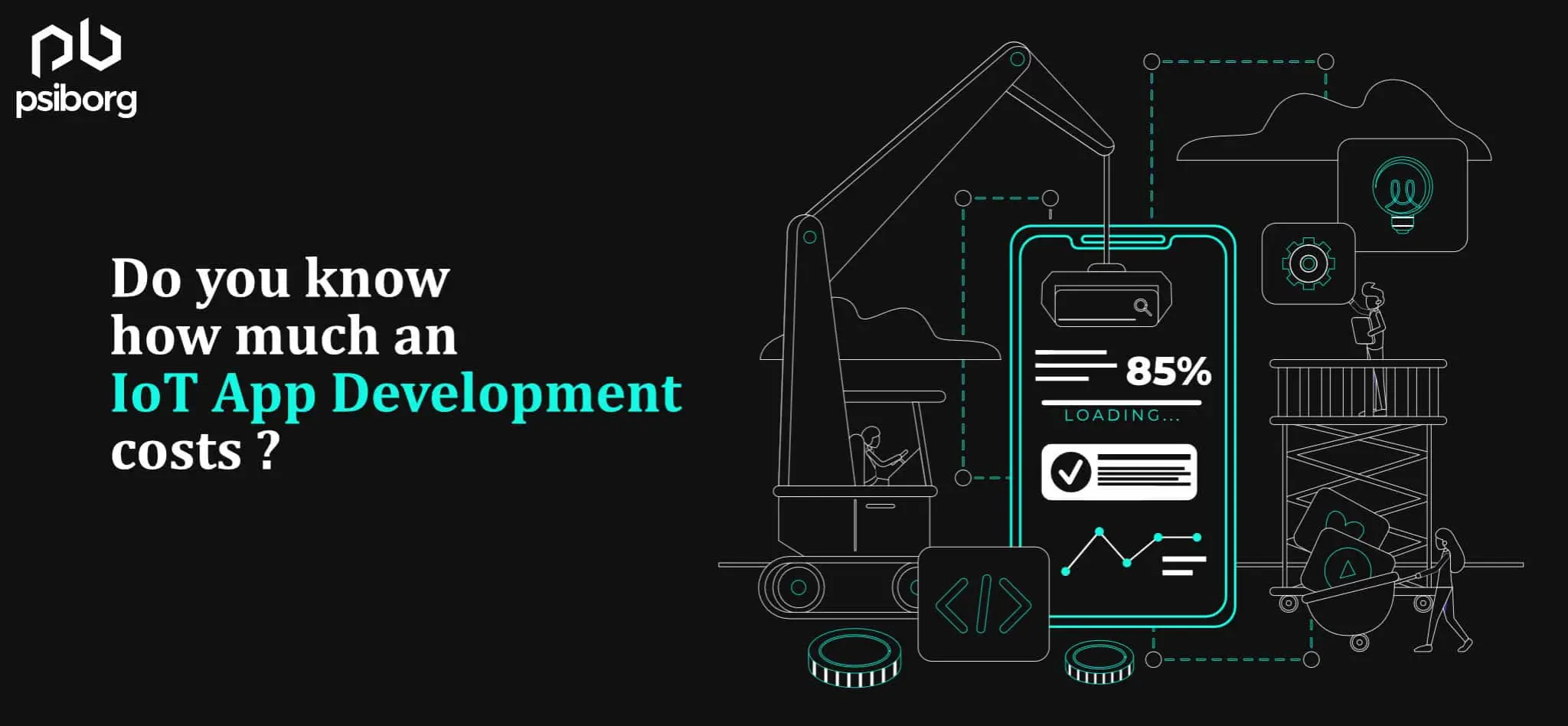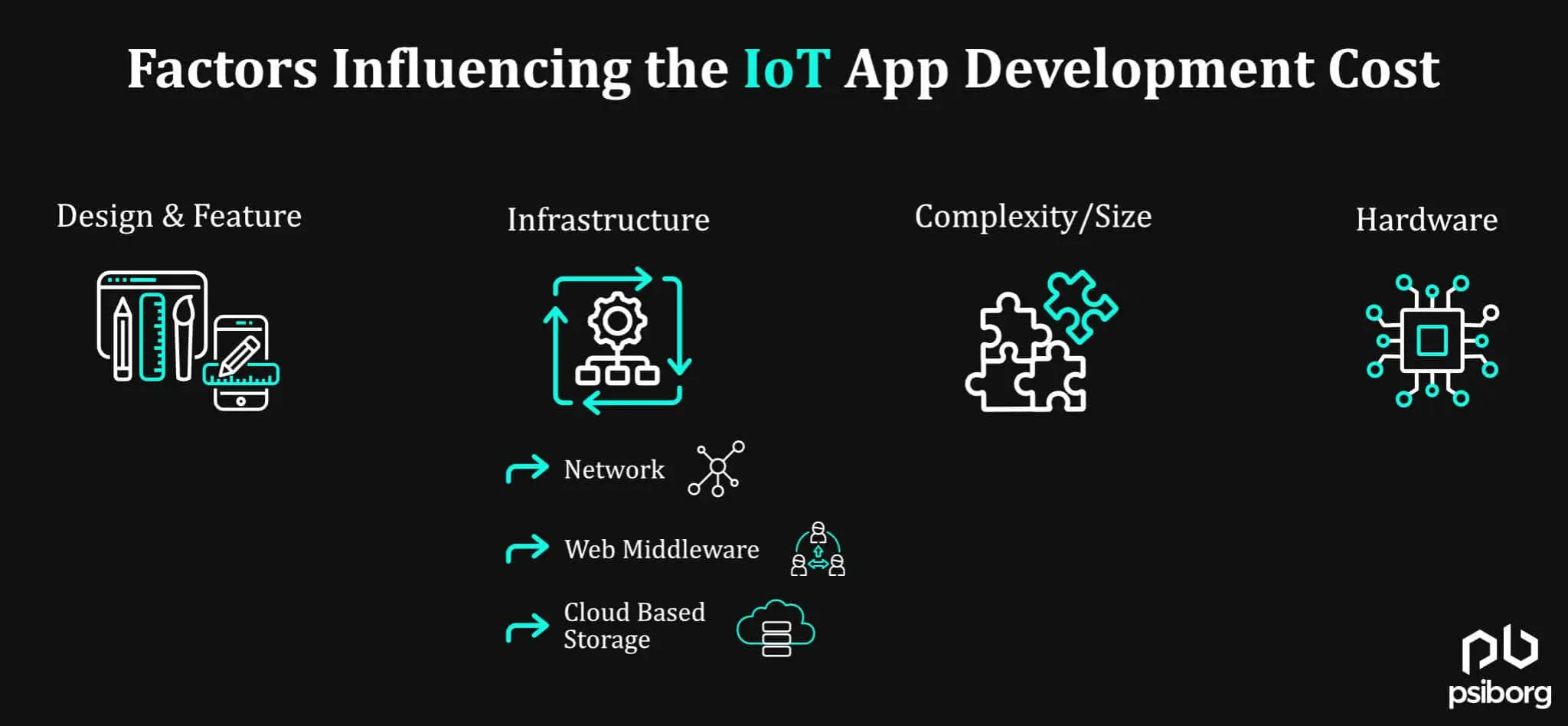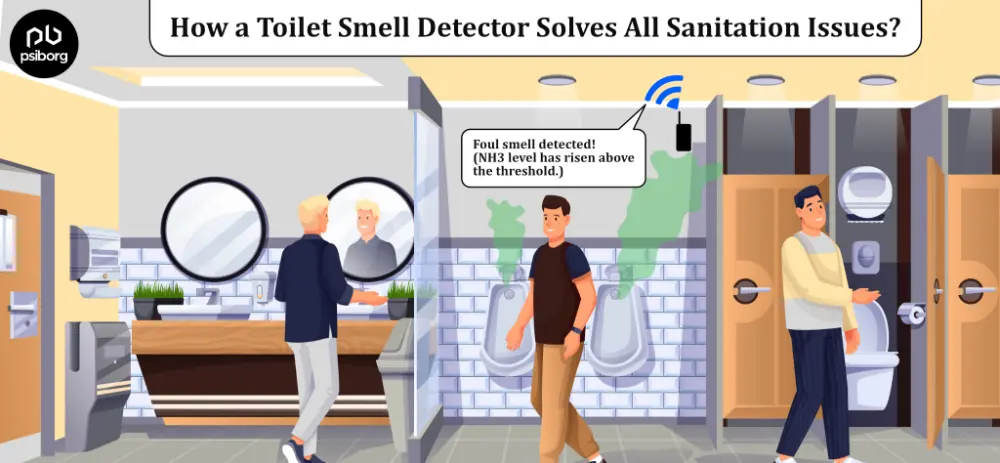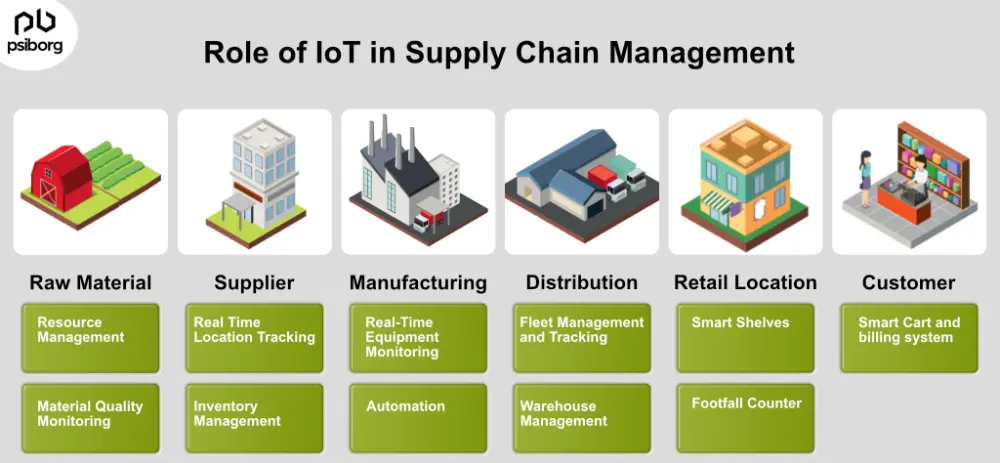The Internet of Things is one technology that connects the world across all industries.
No matter which intelligent tech trend you watch in 2024, you will always find IoT mobile app development and related trends at the top.
Kevin Ashton, the Father of IoT once said-
“The Internet of Things has the potential to change the world, just as the Internet did. Maybe even more so.”
Nevertheless, the Internet of Things helps businesses gain control over every machine and device that a user works on, be it smartphones, televisions, wearables, home gadgets, office gadgets, and much more.
Today, the ratio of smart devices to humans is higher, as they are making our lives more convenient and smarter.
So, if you have a business idea and want to develop an IoT app but are unsure about the IoT app development cost, then you are on the right page.
Here, you will get all the required details about building an IoT app and the cost of building an IoT app.
So, let’s get started!
But, first,

IOT APP: WHAT DOES IT MEAN?
An IoT application is a web, mobile, or desktop application that allows the user to visualize and control the devices connected to the internet.
The IoT apps, whether mobile, desktop, or web, generally include dashboards for viewing and analyzing data from different types of devices in real-time or they can be historical views.
IoT apps are like other automation apps but with internet-connected sensors that track data. For example, fitness apps, healthcare apps, security apps, and home automation apps.
Some of the recent IoT apps built by PsiBorg are:
SMART AGRICULTURE APP
It’s an app with an IoT dashboard that shows real-time agricultural land information in graphical and chart forms. Such as the NPK content of the soil, the humidity of the soil, and much more.
SMART BILLBOARD APP
It is a digital advertising platform that connects all the users in one place, be they consumers, business owners, or shop owners. This app connects all users with billboards present all over the country. The platform schedules and manages single ads and ad campaigns, while offering real-time analytics and insights to measure the effectiveness of their advertisements.
SMART HOME APP
This particular app allows users to monitor and remotely control their home appliances. Smart home app and KIT also offer users easy-to-understand analytics of energy usage and monitoring. The user can also schedule scenes or routines for a hassle-free experience
WHY DO YOU NEED AN IOT APP: FROM THE STATS’ POINT OF VIEW
IoT app development services are currently outgrowing them at a speed that we never imagined.
You don’t believe it?
Look at these stats:
- 65% of corporate humans believe that companies that don’t have IoT-based applications will fall behind in the coming years. (Businesses already have started implementing IoT-based attendance systems)
- 95% of the decision-makers believe that their businesses can leverage IoT applications by the end of 2025. (Businesses already have started implementing IoT based attendance systems)
- The number of online-connected devices is forecast to reach 28 billion by the year 2025
- In the year 2023, it is expected that the overall number of connected IoT devices will grow by another 16%, to 16.7 billion active endpoints
- It’s expected that there will be 25.4 billion IoT devices by 2030.
- There are more than 400 active IoT platforms in existence.
- The IoT market is currently worth $800 billion.
These numbers clearly suggest the ongoing demand for high-end IoT applications and their importance in driving business growth and productivity.
THE EFFECT OF IOT ON MOBILE APP DEVELOPMENT
IoT mobile app development mainly focuses on the users, and it can be used in day-to-day activities. This has greatly impacted our daily lifestyles by making our lives easier and hassle-free.
Thus, businesses are left in the situation of wondering, “How do I build a successful IoT app? And “How much will IoT app development cost?”
- To ease your life a little, here is all the information regarding IoT app development costs and the impact of IoT on mobile app development.
- IoT development offers compatibility with multiple devices and apps. It also maximizes functionality and allows the users to manage all the devices in one go. Therefore, IoT devices are considered the one-stop solution for all.
- With IoT, many enterprises are on the verge of hiring mobile app developers to create apps that are more efficient and offer a better user experience on mobile devices.
- IoT has started a whole new segment in our lives. The main focus here is to offer integrated apps instead of segregated ones on multiple devices. Just think of it, one platform managing all your automation and security-related needs with just one app.
- Finally, IoT needs are unavoidable, and now is the time to embrace this trend. However, there were some worries regarding the security aspect of IoT app development. Also, technologies like Blockchain have come to the rescue thus, making IoT a trendy topic.
This is all about the impact of IoT on mobile applications. Now, who doesn’t want to develop an IoT app when it offers so much? Right?
So, let’s move on and understand the other aspects of IoT app development.
UNDERSTANDING THE NEEDS OF IOT SOLUTIONS THROUGH REQUIREMENT ENGINEERING
Now that you have decided to build an IoT-based app, you have to formalize and check the engineering needs.
To build an IoT app, you have to resolve some IoT-related operational concerns, and for this, you have to engage in effective questioning. You also have to identify the needs and understand the layers of an IoT solution.
1. EFFECTIVE QUESTIONING
In IoT app development, some of the operational concerns that need to be resolved are:
- From what source will the data come?
- Which analysis can lead to tactical understanding?
- Which business-wide system will require integration?
- And which metrics need to be tracked?
Please note that the quality of your IoT app lies in the data that your connected gadgets produce, which is then used to extract actionable intelligence and get timely insights into your project.
2. IDENTIFYING NEEDS LOCALLY
The next step is to develop a first draft and contemplate whether you have enough technical knowledge to build this in-house.
Questioning this yourself will be very helpful. Like which database and storage solution is needed, and whether or not it can be built atop your existing data infrastructure
3. LAYERS OF AN IOT SOLUTION
Whenever we hear the word ‘Internet of Things,” or IoT, the image of “sensors” immediately pops into our minds.
However, there are five layers that should be considered when developing an IoT solution:

HARDWARE LAYER
The majority of the devices are low-powered devices or high-powered equipment, everything today is powered by the IoT.
An IoT device can be divided into five parts:
- Sensors:The sensors gather the information, which is then displayed or acted upon by an actuator/indicator.
- Computer:We all know what it is- the “brain” of an internet-connected gadget. Every IoT device needs some onboard computation to collect, store, and send information.
- Connectivity: The edge or your core data center can serve as your data management site, but for this, all the IoT devices should send and receive data to and from that place.
- Power: It’s obvious that the computing device, the sensors, and the data transit will all be powered by this energy source.
- Housing: IoT devices need a shield to protect the inner workings of the elements. After all, IoT gadgets are made to keep humans away from harmful conditions like high heat, water, or vibration levels.
COMMUNICATION LAYER
Connecting the hardware to the IoT platform requires communication. You can say, the communication layer is the middleman between hardware and application. Access can be done wirelessly or through an Ethernet cable.
Cellular networks like- 3G, 5G, and NB-IoT, LANs- WiFi and Bluetooth, LPWANs- LoRaWAN, SigFox, and mesh protocols with a limited range like Zigbee and RFID.
The cost of connectivity can vary depending on the network you use and your pricing structure. The per-device connectivity cost in a narrow range is estimated at $6 to $12, meanwhile the cost for LoRaWAN is around $4 to $6.
IOT CLOUD SERVICES
The next logical step in an IoT solution is connecting to a cloud server. The cloud is needed to back up all your Internet of Things gadgets and apps, plus the cloud is the one place where you can find all your collected data.
SOFTWARE APPLICATION
The possible use of IoT is bound by the innovativeness and creativity of those who develop and enforce it. The usage of software applications includes:
- Operational data collection
- Location monitoring
- Monitoring user’s actions
- Tracking of assets in real-time
A single IoT app can serve different business verticals in the IoT categories.
SECURITY CROSS-LAYER
Due to the complex and extensive nature of modern threats, it is essential to take security measures. Here, the security layer presents considerable difficulties in integrating IoT systems because of issues like data breaches, tracking lousy software, and hacking.
The security cross-layer includes device security, cloud security, and connection security.
FACTORS INFLUENCING THE IOT APP DEVELOPMENT COST
There are several factors that can influence the total cost of an IoT app’s creation. This can be the developers’ level of expertise, the complexity of the app, the availability of ready-made components, and much more.
Some of the major factors that affect the IoT app development cost are-
1. Design & Feature
2. Infrastructure
3. Complexity/Size
4. Hardware

1. DESIGN & FEATURE
The design of an app has a huge impact on the entire app development process. The IoT project cost can vary depending on the complexity of the design and features.
Adding premium features, third-party integrations, and push notifications can lead to a rise in the cost of IoT app development.
Nevertheless, the complete procedure of making mobile apps is driven by the user interface design and the app’s layout. The hourly rate of your IoT app development will rise in proportion to how intricate your idea is.
2. INFRASTRUCTURE
The IoT application infrastructure can be classified into three main components. And these factors can increase the cost of developing a mobile app.
These factors are the network, middleware, and cloud-based storage constituting IoT cloud Integration services.
- The Internet of Things applications will be useless without an obstacle-free network. Thus, when building an IoT app, it’s very important to give priority to a safe connection between the two devices. Moreover, LPWAN and other similar forms of short-range wireless networking are interlinked with any useful application.
- The interface with external services is an essential feature of the mobile app. When you connect IoT gadgets and external systems, the middleware pieces play an important role as the go-betweens. Third-party integration is needed if you want your IoT mobile and web apps to run seamlessly.
- The cloud-based system is best when it comes to data protection. It will be a wise decision to invest money in the Internet of Things app that runs on the cloud.
3. SIZE & COMPLEXITY
Your IoT app’s size and complexity can also affect how much it will cost to create it. For instance, if you want to make your IoT app more sophisticated, it will take a longer time to construct it, thus increasing the app development cost.
4. HARDWARE
The hardware that is employed to run the app can also influence the IoT app’s cost. The hardware phases involved in creating an Internet of Things app will add only a small amount to the final pricing.
Moreover, keep in mind that the IoT app development prices of the various cooperation strategies will not be the same. A software development team is extended and paid hourly as per the team extension model. The total cost of making an app is factored in when doing it through end-to-end development.
An IoT app development service provider can estimate the cost of your Internet of Things solution unless you already have an in-house IT specialist. Otherwise, you can contact PsiBorg for more consultation on the same.
IOT APP DEVELOPMENT COST: WHAT YOU IGNORE
This section is added to focus on the not-so-obvious contributors to the expense of developing an IoT solution and how you can tackle them.
1. SIZING UP
The need for scalability in IoT systems is often neglected just to keep the cost down. But, after the app testing, if the system is extended from 10 gadgets to 100 gadgets, it should handle all sorts of data and jobs without compromising on speed and quality, and the project cost can rise very high.
Therefore, it is essential to contemplate the expansion from the very beginning of the design process. Your system should be able to accommodate more users, features, and connected devices without compromising speed and reliability.
2. SCOPE SHIFTS
Improper planning can lead to redesigning and performing U-turns in the middle of development, and these actions will not go undetected in the invoice. However, these occurrences can be frustrating for the client and for the development team, but alas, they occur more often than they should.
To avoid these traps, the developers should stick by the industry standards and begin the work with requirement elaboration and the SRS document.
WAYS TO CUT IOT APP DEVELOPMENT COSTS AND PREVENT FAILURE
Developing an app is indeed a bit costly, but if you are on a tight budget, you should probably seek advice on cutting expenses.
Some of the ways through which you can reduce the IoT app development cost are:
- Create a complete set of project requirements
- Reduce bugs and rework in your app’s development
- Develop a mobile hybrid app.
SO, HOW MUCH EXACTLY DOES AN IOT APP DEVELOPMENT COST?
Developing a feature-limited IoT solution can be done for as little as $50,000. However, adding features like payment system integration or custom sensors to the IoT app’s hardware can cost you up to $70,000.
Moreover, the prices also vary by region. You will find drastic changes in rates if you compare Southeast Asia and Western Europe.
For instance, the hourly price in:
- Southeast Asia can range from $20 to $40.
- $30-$50 in East Europe
- $20 to $50 in India.
Although, there will also be price differences depending on the size of the company. Small firms/startups will complete the project at a low price as they have started serving in this sector and want to build good trust and connections.
To sum up, an average IoT app development cost can range between $10,000 and $50,000.
IoT app development is in great demand these days, and users should access these innovative technological solutions to make their lives safer and easier by allowing them to work remotely.
Do you also want to develop an IoT app?
Connect with an IoT app development company and get a consultation from the top experts!
Kickstart your journey in the IoT system today!






